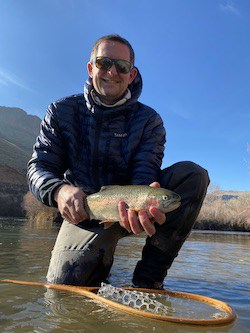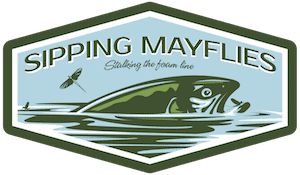DO TROUT EAT SALAMANDERS?
May 3rd, 2022
Salamanders and newts are amphibians of the order caudata that are a favorite food item of many animals. Fish will gladly eat salamanders if given the opportunity, but there’s a catch. It depends upon the species of salamander, since some are toxic.
In the below article, I’ll explain the relationship bull, brown, brook, and rainbow trout have with certain salamanders in the United States and abroad.
Do Trout Eat Salamanders?
Which Species Are Eaten?
Salamanders as Live Bait
Summary

In the above picture I’m holding several fertilized salamander eggs.
Salamanders and Trout
Yes, trout eat salamanders with regularity, but their consumption is tempered by two factors.
The first is that some salamanders are toxic, and this toxicity is usually advertised in the form of bright colors (orange and red).
The second is that these amphibians are generally only in an aquatic phase for a brief period of their lifespan, making them a rare meal since almost all them become terrestrial and only enter the water to lay eggs.
Here’s a picture of a brown trout (Salmo trutta) I caught, showing it’s teeth which are more than capable of catching and consuming a salamander or other similarly-sized amphibian. Notice that they even have recurved teeth on their tongues!

Which Salamanders do Trout Eat?
Trout won’t eat salamanders or newts that they know are toxic, such as the red eft (Notophthalmus viridescens) and other red or orange-colored species.
Interestingly, the red eft will eventually morph into an eastern newt, which trout will definitely eat.
Trout favor eating aquatic amphibians, which means during the amphibian’s aquatic phase of life when they have gills.
Amphibian eggs are attached to plants and rocks in most cases, but the trout won’t eat the eggs.
Salamanders in their aquatic phase will have gills for use underwater, but some keep their gills permanently.
This condition is called Neoteny, and it’s relatively rare. Tiger salamanders (Ambystoma tigrinum) are more likely than most species to retail their gills and spend their entire lives underwater. When this happens, they’re called “neotenic.”
Axolotls (Ambystoma mexicanum), on the other hand, are designed to retain their gills all their life. So are Mudpuppies (Necturus maculosus), one of my favorite wild critters.
Salamanders and newts are most likely to lay their eggs in still or slow-moving water during springtime, so if you’re fishing with salamanders you’ll have the most success in lakes, ponds, and slow-moving rivers with slack water.
All species of trout will eat salamanders, but your bait should be small enough to be easily inhaled by the fish. This would mean salamanders in the 2-3 inch range for most situations.
Here’s a picture of a baby aquatic salamander in my hand. At this size, trout will eat quite a few of them.

Can You Use Salamanders as Bait for fishing?
Yes, you can use salamanders as live bait for fishing, but you’ll want to make sure you check with your state’s wildlife regulations to make sure you’re not harvesting a protected amphibian species. Also, any amphibian with bright coloration is most likely toxic and will be ignored by trout and other fish.
A couple decades ago I found five blue-spotted salamanders under a log when my dad and I hit the shore for a restroom break while fishing. I reluctantly tried using one of them as bait, but I didn’t catch anything. Looking back, I realize it was because I was fishing it in over 10-feet of water. Way too deep.
There are actually salamander fly patterns available, but I’ve never tried using one while fly fishing.
In the below picture, you can see the regurgitated stomach contents of one Pacific giant salamander I caught in California. Their appetites are legendary.

Summary
Salamanders, and other amphibians like frogs, are a favorite food of many trout, bass, and northern pike.
If you’re using them as live bait, focus your fishing efforts during spring and summer in still or slack water, preferably with some weed cover.
Don’t waste your time in deep water, focus on the shallow water instead.

About the Author
My name's Sam and I'm a fly fishing enthusiast just like you. I get out onto the water 80+ times each year, whether it's blazing hot or snow is falling. I enjoy chasing everything from brown trout to snook, and exploring new waters is something I savor. My goal is to discover something new each time I hit the water. Along those lines, I record everything I learn in my fly fishing journal so I can share it with you.
Follow me on Instagram , YouTube, and Facebook to see pictures and videos of my catches and other fishing adventures!


